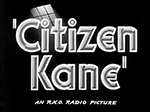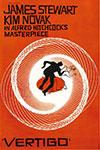Classes
Art History 100 Image and Environment
Image and Environment is an introduction to painting, sculpture, and architecture in Europe and America from the Renaissance to the present. Classes are organized around five focused topics: Renaissance Florence; the artist in the seventeenth century; art and revolution; nineteenth-century realism; and abstraction.
Art History 110 Inside Art
Inside Art is a discussion-based introduction to painting, sculpture, and architecture in Europe and America from the Renaissance to the present. Classes are oriented to discussions of critical issues that develop visual, written, and oral skills. The course units are: Techniques and Materials, Visual Strategies, Illusion and Its Discontents, Subjects and Signs, Portraiture, and Interpretation.
Art History 250 American Art
An exploration of American painting and sculpture from the late eighteenth century to the early twentieth century. This course introduces individual painters and at the same time it develops ways of looking at and thinking about art and objects as material expressions of American society, politics, and culture. Copley, Peale, Stuart, Cole, Homer, Eakins, Sargent, Cassatt, and Whistler are some of the key figures to be studied.
 Art History 202/Film Studies 202 Talking Pictures
Art History 202/Film Studies 202 Talking Pictures
The best films of the past century have commanded our attention and imagination in part because of their artistry and the way they tell stories visually. This course closely examines a selection of those films from around the world that can be considered serious art and that can be understood as the products of particular times and cultures.
Art History 290 American Films that Matter
“ You may think you know what you’re dealing with, but believe me, you don’t.” —Noah Cross (John Huston) to Jake Gittes (Jack Nicholson) in Chinatown.
You may think you know what you’re dealing with, but believe me, you don’t.” —Noah Cross (John Huston) to Jake Gittes (Jack Nicholson) in Chinatown.
This is a seminar on the interpretation of significant feature-length American films from the silent era to the present. Among the films to be considered are: Sherlock Jr, The Grapes of Wrath, Sunset Boulevard, Vertigo, Touch of Evil, Chinatown, Blade Runner, and Do the Right Thing.
Art History 350 The Gilded Age
The Gilded Age examines American art, architecture, and culture from the Centennial Exposition (1876) to the Chicago World's Fair (1893). Some topics extend into the Progressive Era up to the Armory Show of 1913. Paintings and architecture will be linked up with ideas, trends, movements, events, persons, and novels of the period.
